FAIRFIELD — First responders from across central Maine came together Tuesday at the Lawrence High School and Junior High complex for a rare joint training session that aimed to prepare them for an event they hope they’ll never have to encounter — an active shooter.
From morning until late afternoon, about 41 responders from Kennebec and Somerset counties, including municipal officers, county deputies, emergency medical technicians and firefighter rescue crews, worked together in drills that simulated scenarios in which law enforcement cleared portions of the school so that EMTs could tend to the actors who were portraying the wounded.
In one scenario, about eight wounded students, portrayed by Eastern Maine Community College criminal justice students wearing prosthetic bloody wounds, were scattered about the school cafeteria, hiding in corners of the room, writhing on the ground while screaming for help or crying in pain, or lying still — pretending to be unconscious or dead.
Law enforcement officers were in the room first, sweeping through the space to ensure the threat was not in the immediate area before rescue personnel could enter, at which point they identified the nature of each student’s injuries and evacuated them from the cafeteria by carrying them on their backs or dragging them.
“It’s a lot different in the real world when it’s loud and echoing and people are screaming,” Gregory Roy, the tactical commander at Maine State Police who served as one of the four instructors Tuesday, told responders after the initial drill. “Your team is talking over here and another team is talking over there, so it’s hard to know what’s being said. It’s chaotic, a little bit.”
“Let’s get some more law enforcement to clear the room so we can get EMTs in here sooner,” he said before the responders ran the drill again.
That simulation, and the several others the responders conducted Tuesday, has been in the works for years, though the school shooting in Parkland, Florida that resulted in 17 students and teachers dead in February adds urgency to the need to be prepared.
David LaFountain, who serves as the chief of both Waterville and Winslow Fire Departments, submitted a request for grant funding in 2015 to finance a day of training.
“It has taken this long to get all of the planets in a row,” he said at the school Tuesday, adding that everything fell into place at a coincidental time.
“The thing that worries us now is that school shootings are increasing the last few years. After (the online threats) in Skowhegan, I think it’s wearing down that we are totally safe and this can’t happen here. Because tell me why it can’t happen here?”
LaFountain and responders who participated in the training all said the biggest takeaway from the day was learning how to work alongside other agencies.
“Our EMTs have to be comfortable working sandwiched in between a couple of officers,” he said, adding that communication would be the biggest barrier in an active shooter situation, so performing the simulations would hopefully provide an advantage if one were to ever occur in the area.
“On the worst day of our careers, we’re all going to be huddled behind the bleachers together, so we need to figure out how to work together,” said Skye Carpenter, an EMT with Redington Fairview General Hospital in Skowhegan. “When you see the trifecta — the police, fire and EMS under one roof, it’s optimal training.”
Carpenter said it’s beneficial for the agencies all to be cross-trained so that lives can be saved no matter who shows up first. He referenced police officers running into burning buildings to rescue a victim or applying a tourniquet to someone who’s been injured.
“If we all train together, see what one another is doing, we can pick up on those aspects and make a difference,” he said.
Four school officials from several districts watched the simulations take place Tuesday. Among them was Peter Thiboutot, the assistant superintendent of Alternative Organizational Structure 92, who said school officials and responders need to be on the same page in regard to safety plans.
“The biggest thing we learned is understanding the importance of communication and how it all works together and fits together so that we can make ourselves safer,” he said. “When we look at out own school plans and look at the tactics and techniques that they use, it just makes us a stronger, safer organization.”
While the simulations took up the majority of Tuesday’s training, it’s just one aspect of what LaFountain said needs to take place to prepare for an active shooter.
“To be totally honest with you, if I’m showing up and there’s an active shooter that is going through, the damage is done,” he said. “We’re just trying to minimize it as much as possible. So what can you do?”
One possible answer LaFountain had in mind would be investing in bags of tools known as “Stop the Bleed” kits and training students, teachers and community members on how to use them. The kits include items such as tourniquets and gauze and other tools to dress wounds. He said it takes about four hours of training to understand how to utilize the tools and stop an injured person from bleeding to death, which he said is the most common cause of death during a shooting situation where law enforcement can’t get to the victims quickly.
The kits cost about $100, according to LaFountain. Ideally, he’d like to see one in every classroom.
“Chances are you do have a safe learning environment, but if you hear gunshots, you need to know what to do.”
Emily Higginbotham — 861-9239
ehigginbotham@centralmaine.com
Copy the Story LinkSend questions/comments to the editors.


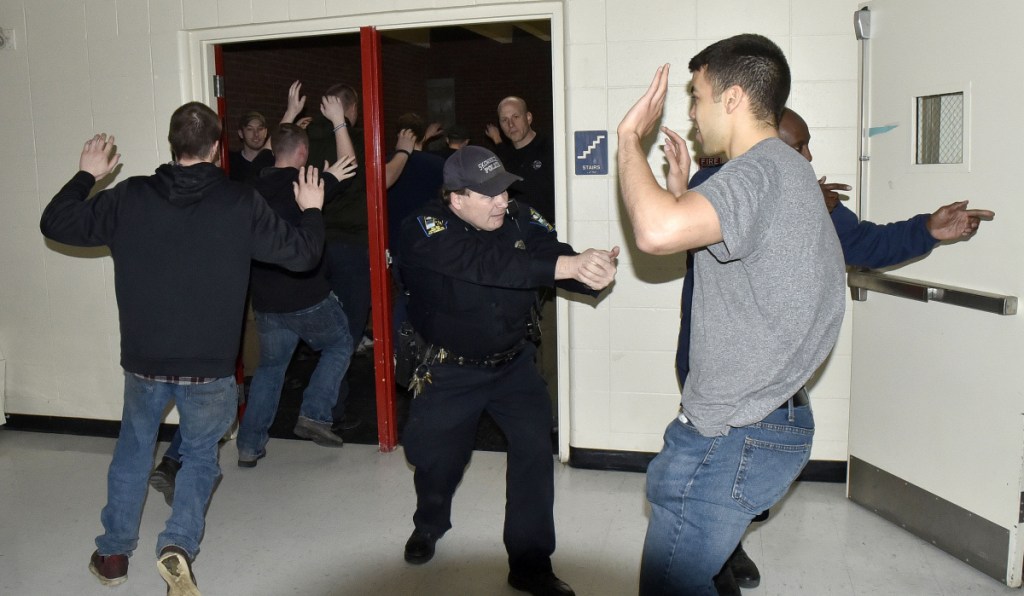
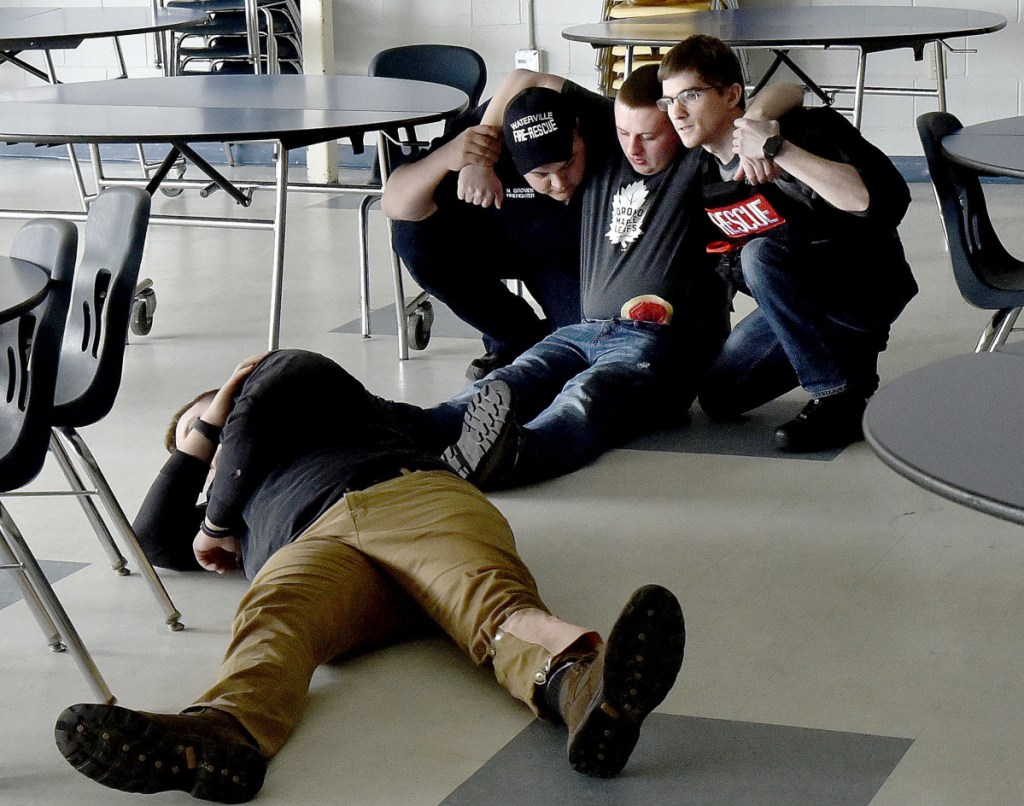
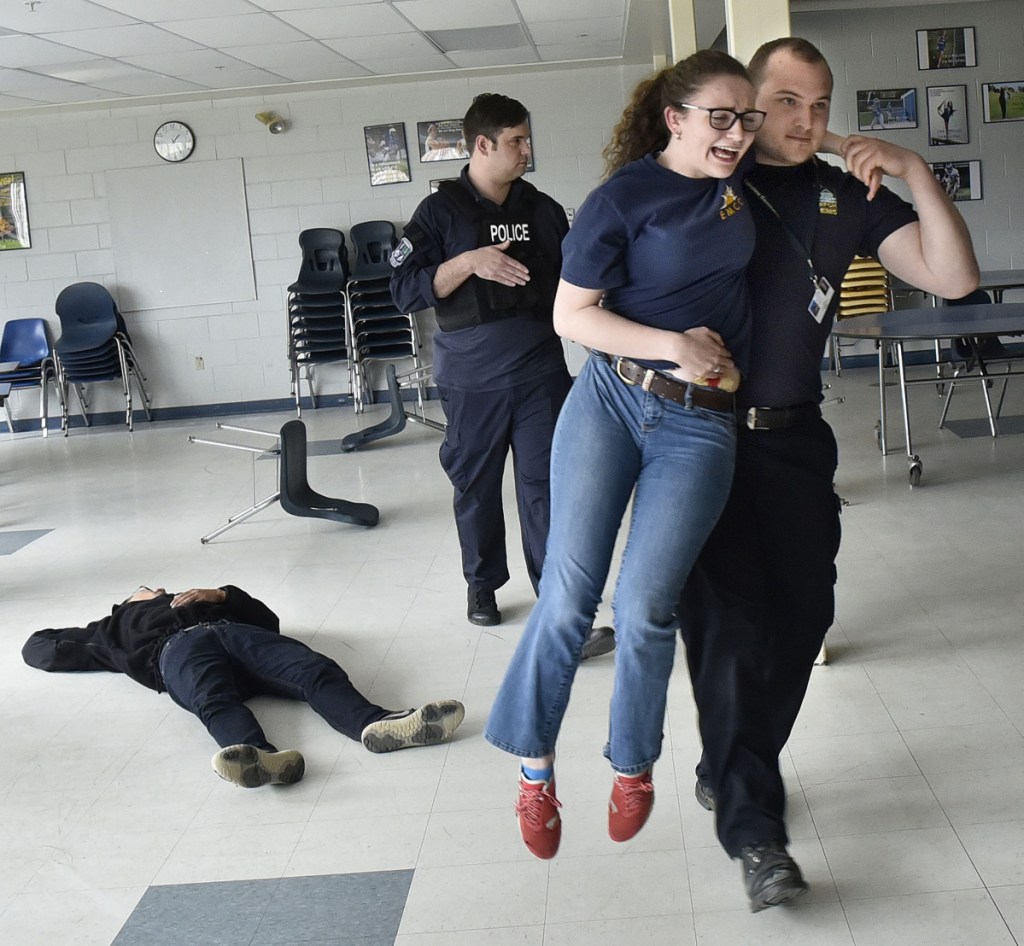
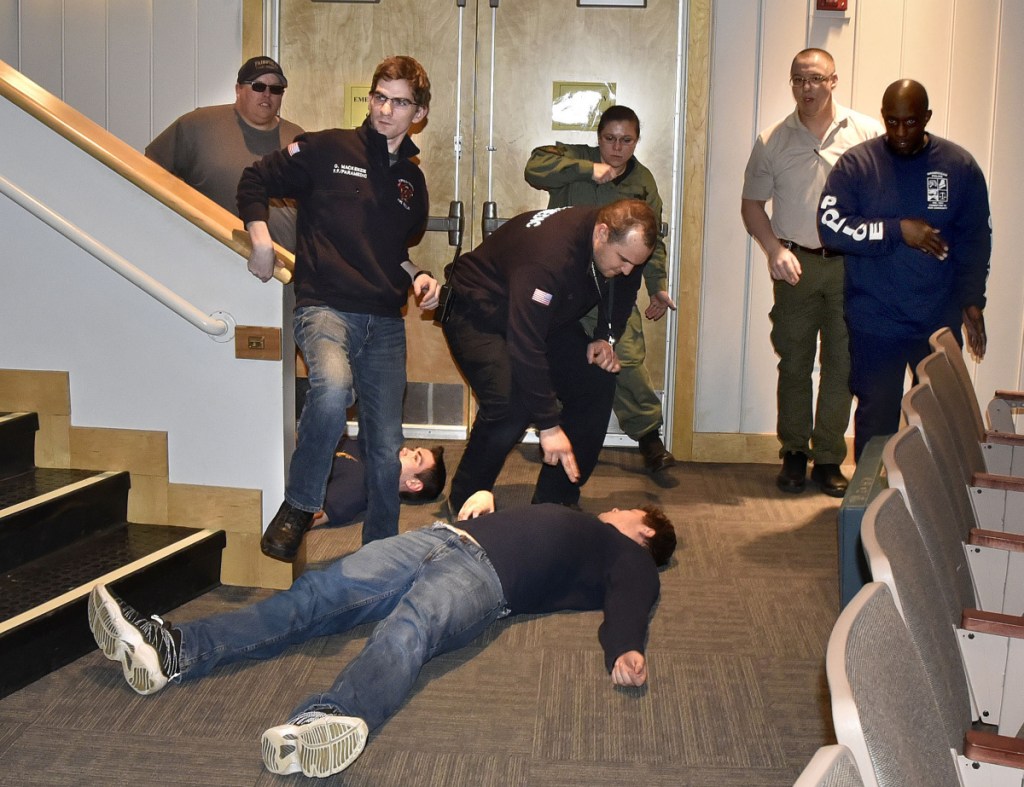
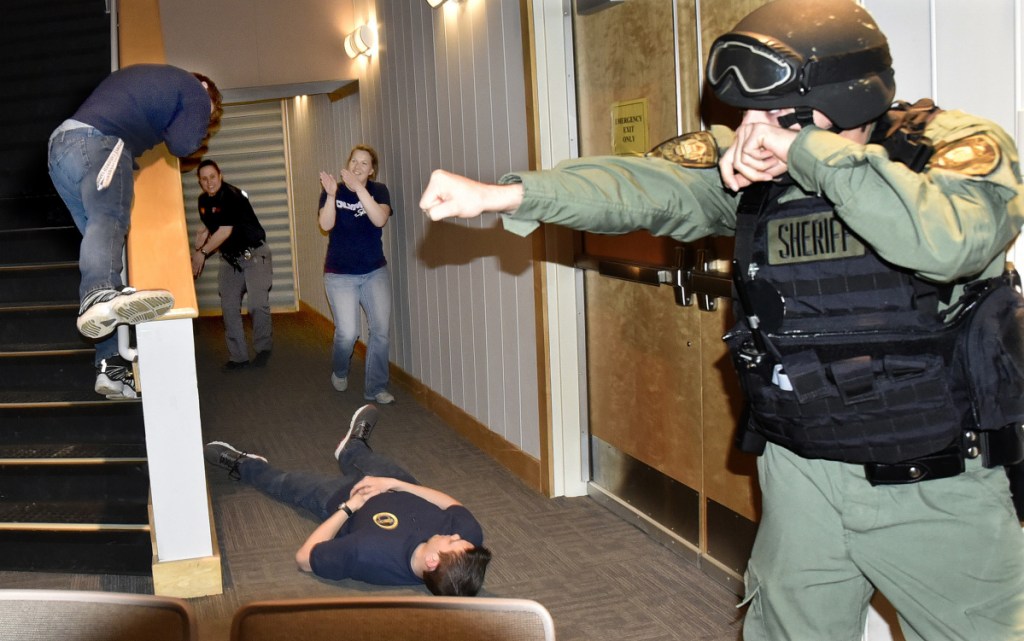
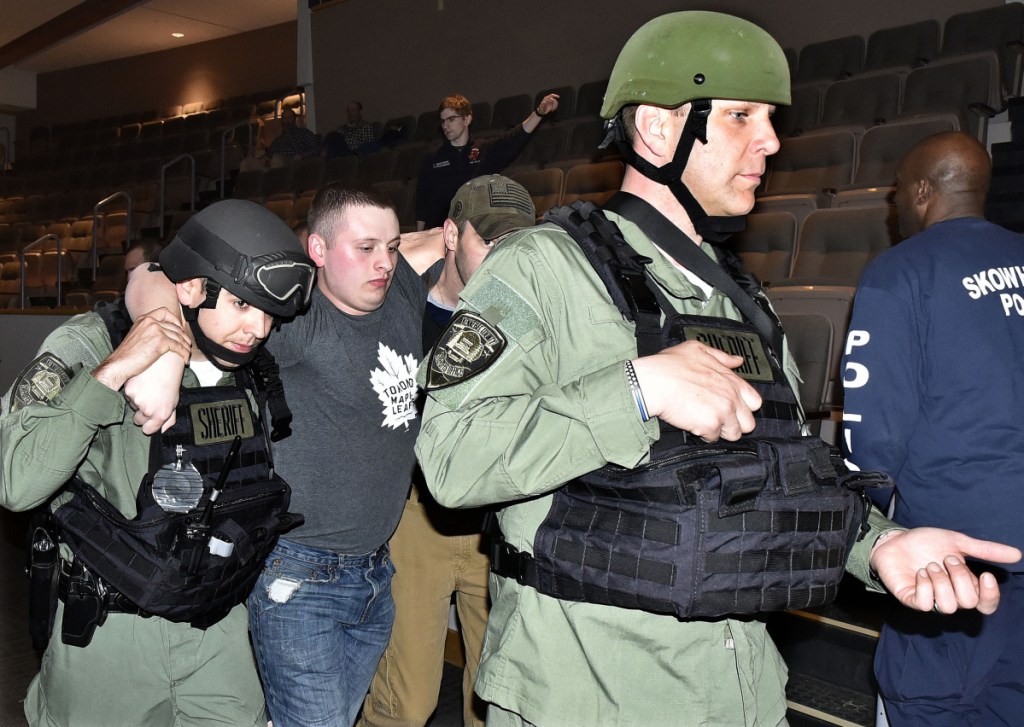
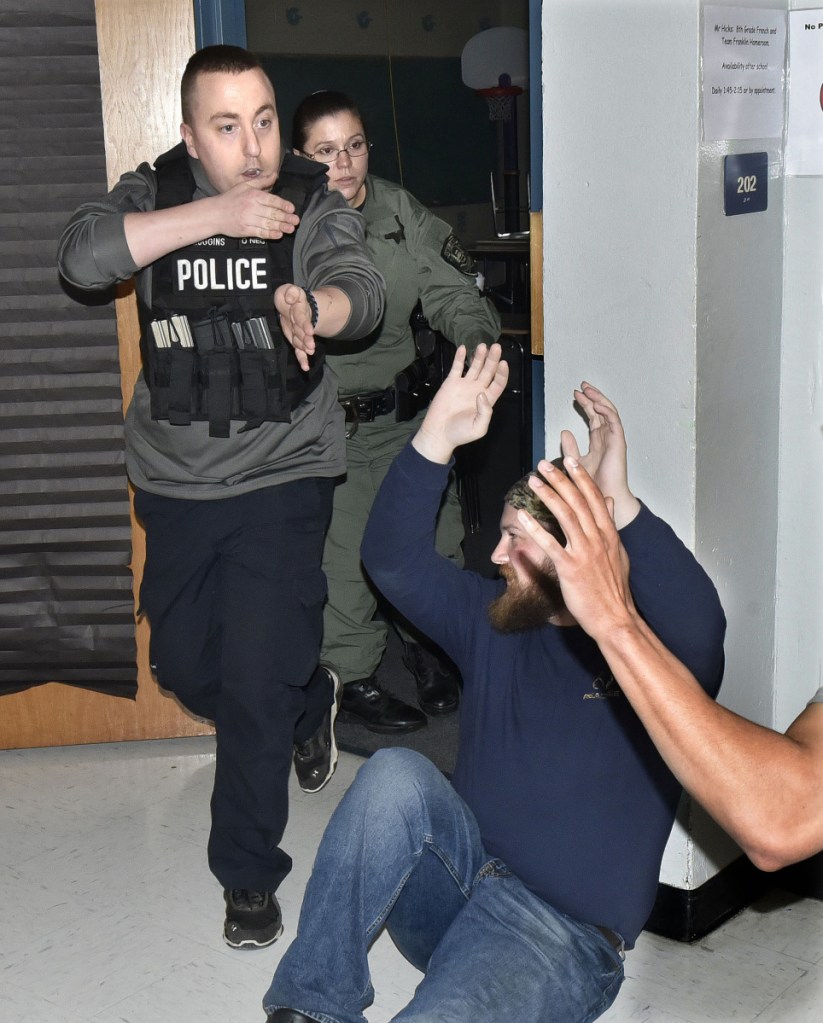
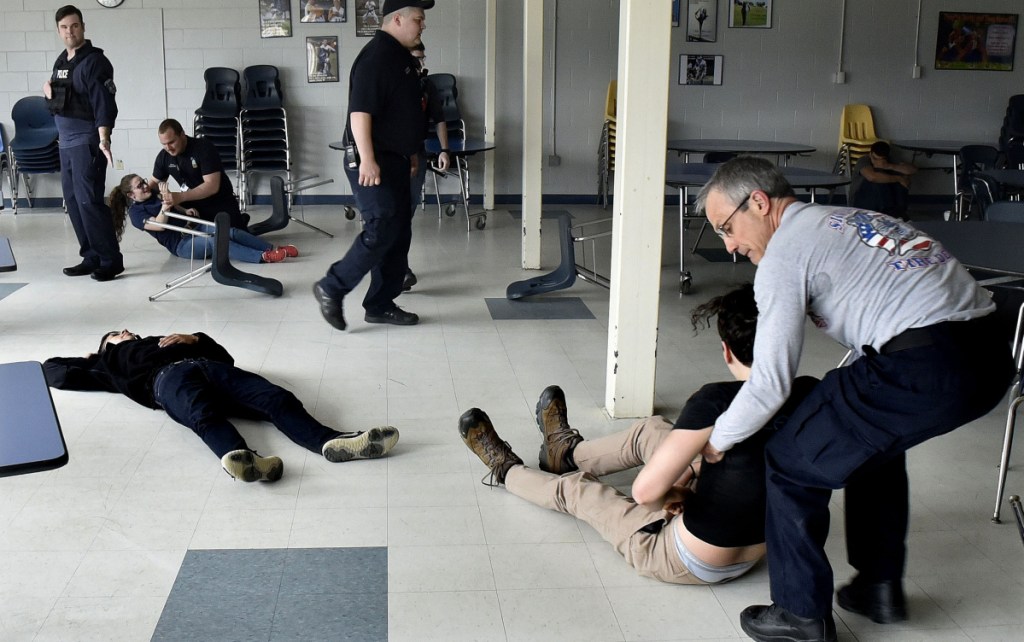
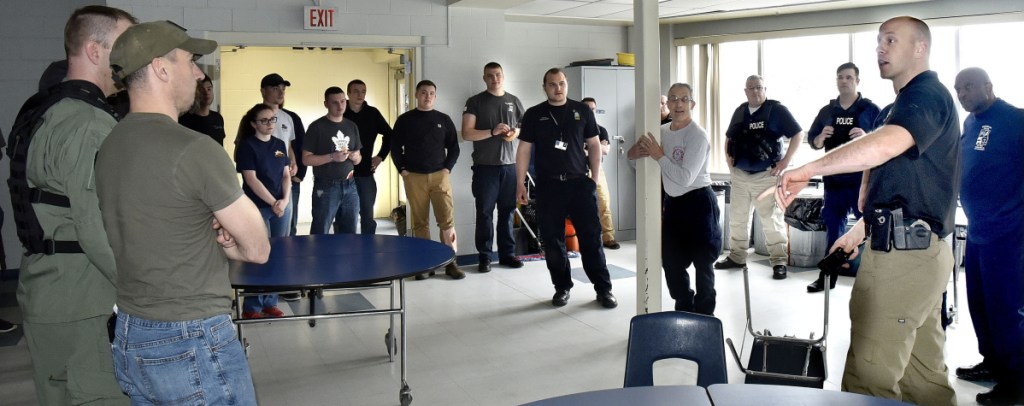
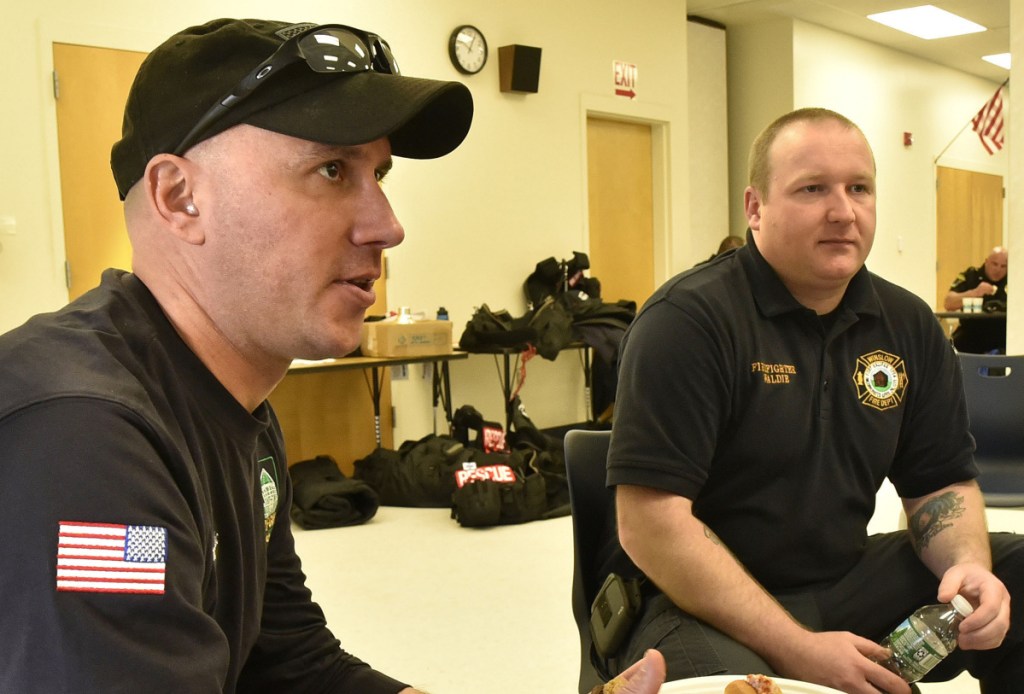

Success. Please wait for the page to reload. If the page does not reload within 5 seconds, please refresh the page.
Enter your email and password to access comments.
Hi, to comment on stories you must . This profile is in addition to your subscription and website login.
Already have a commenting profile? .
Invalid username/password.
Please check your email to confirm and complete your registration.
Only subscribers are eligible to post comments. Please subscribe or login first for digital access. Here’s why.
Use the form below to reset your password. When you've submitted your account email, we will send an email with a reset code.